For children 2 - 3 years old
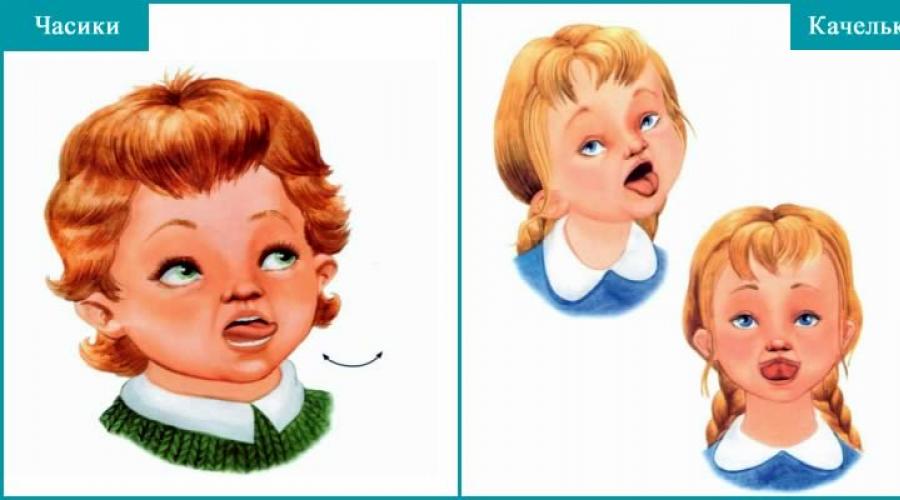
When the baby funny distorts his first words, the parents listen to him with affection, retelling the “pearls” of the child to their relatives and friends. Of course, this is age-related and often passes over time, but not as harmless as it might seem.
Why do you need gymnastics
Speech defects can seriously poison the life of a child, because they often become a reason for jokes and ridicule among children.
Incorrect pronunciation of sounds occurs due to imperfection of the articulatory apparatus. This is the name of the set of organs involved in the generation of sound: larynx, lips, tongue, jaw, etc. And just as parents develop a child's physical data by physical education, these organs need gymnastics.
The purpose of articulatory gymnastics is the development of the speech apparatus, the improvement and development of its movements.
Does everyone need it, and why do the exercises if it is too early to talk about speech defects? Everyone. For children 2 - 4 years old, it will help to strengthen the muscles of the articulatory apparatus, to gain mobility of the tongue. By the age of 5 - 7, already existing violations can be corrected. It is important to understand here that the earlier you start classes, the more likely a positive result is. Closer to school age and in primary grades, speech defects are very difficult and sometimes impossible to correct even with a speech therapist.
Sometimes children pronounce sounds correctly, but due to the sluggishness of sound pronunciation, "porridge in the mouth" is obtained. This phenomenon is considered an unexpressed deviation in the development of speech and is called an erased form of dysarthria.
Basic rules of gymnastics
Classes should become a system for you and your child, only regular training can give results. What else you need to know:
- the duration of the "charging for the tongue" depends on the fatigue of the crumbs, but no more than 10 minutes;
- during classes, the baby sits in front of a mirror to see his tongue;
- never force a crumb, it is better to turn training into a game;
- classes are held at a measured pace, 4 - 5 exercises per session;
- if it is difficult for the baby to repeat the articulatory movement after you, help him with the handle of a teaspoon;
- the task of parents is to monitor the correctness and smoothness of actions, otherwise gymnastics does not make sense.
If gymnastics is given to a preschool child with great difficulty, his tongue trembles and does not obey, it is better to consult a speech therapist. Perhaps the baby needs a special massage.
Similar material:
Exercise types
Articulation exercises are static (the tongue is motionlessly fixed in a certain position) and dynamic (all organs of the speech apparatus are involved).
Static exercises
When performing them, it is important not only to show the position of the tongue, but also to hold the pose for about 7 to 10 seconds.
"Shoulder". We open our mouth wide, "put" the relaxed tongue on the lower lip.
"Mushroom". We suck our tongue to the palate and open our mouth as far as possible.
"Proboscis". Pull the closed lips forward as much as possible with a "tube" and hold them for 5 - 10 seconds.
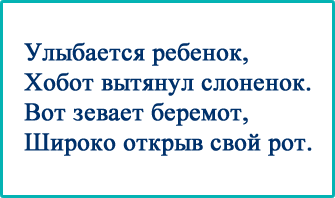
Dynamic exercises
The exercises are performed at the expense of, where the position of the speech organs changes rhythmically.
"Watch". We open our mouth and smile. We make the tongue narrow, with its tip we stretch to the corners of the mouth.
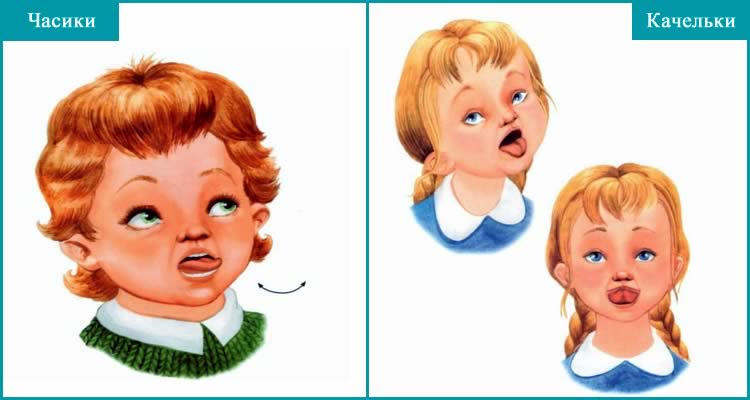
"Swing" . We open our mouth and stretch our tongue to the chin, then to the nose.
"Where is the candy?" Lips are closed, alternately we rest our tongue on each cheek.
"Horse". We fix the tongue, as in the "mushroom" exercise, and click strongly.
As you can see, the movements are very simple, and you can perform them even without a speech therapist.
Age features of children and gymnastics
It is still too early to do articulatory gymnastics with babies, but an eight-month-old baby is quite capable of repeating some actions for an adult: puff out cheeks, stick out his tongue, pronounce simple combinations of sounds. For example, you can sniff with your baby while changing clothes or washing your face.
For children 2 - 3 years old
Full-fledged classes on the development of the articulatory apparatus should begin at the age of two. It is too early to talk about the production of the most problematic sounds - hissing, sonorous and sibilant. Therefore, the main goal of the work at this stage is the development of auditory attention, acquaintance with the strength and pitch of the voice, control of the duration of oral inhalation, clarification of the pronunciation of onomatopoeic combinations (meow-meow, co-co, boom-boom).
"Ball" . Ask your baby to puff out cheeks and deflate them. If it doesn’t work right away, press lightly on them. Subsequently, you can inflate the cheeks one by one.
"Guess." Prepare hot and cold water, a teaspoon. When the child closes his eyes, touch the device to the lips of the tongue and offer to guess what water the spoon has been in.
"House". Opening his mouth (house), the baby shows the tongue, then hides it again.
"Gates" . Opening your mouth wide, you need to fix the position (5 - 7 seconds).
Material on the topic:
For children 3 - 4 years old
The purpose of the lesson is to acquaint you with the organs of speech and their functions (lips smile, stretch out with a tube; the lower jaw helps to open and close the mouth; the tongue moves up, down, in a circle, to the right and to the left).
Smile and hold this position counting.
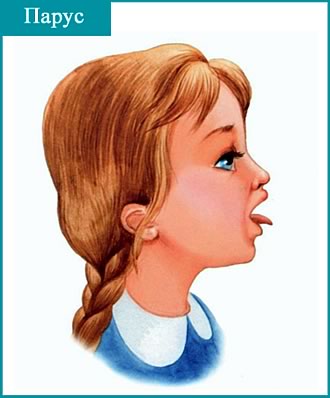
"Delicious jam"... Ask your toddler to pretend to lick the jam from his lips. First from the top, then from the bottom.
From the above exercises, children learn to perform the "Shovel", "Watch", "Swing", "Horse".
The playful character will add to articulatory gymnastics the use of pictures that clearly show how to perform the exercise and what needs to be depicted. Funny verses will also help to entertain the baby.
For children 4 - 5 years old
 Purpose of work: consolidation of old and introduction of new concepts: upper and lower lips, teeth; wide and narrow tongue; tubercles behind the teeth. Requirements for the exercises performed increase, the pace of work increases.
Purpose of work: consolidation of old and introduction of new concepts: upper and lower lips, teeth; wide and narrow tongue; tubercles behind the teeth. Requirements for the exercises performed increase, the pace of work increases.
"Needle". We open the mouth, push the tongue forward as much as possible, making it narrow.
Smiling, we open our mouth wide. The tip of the tongue rests against the tubercle behind the lower teeth. The position is being held.
"Let's brush our teeth"... The mouth is wide open again, a smile on the lips. With the tip of the tongue, we make movements that resemble brushing teeth from the inside (right-left). Only the tongue works, the rest of the organs are motionless.
For children 5 - 7 years old
 Purpose of work: to give an idea of the back of the tongue. The execution of the studied exercises is flawless and brought to automatism. The child easily performs complexes in which he easily and quickly changes the position of the organs. For example, hearing such a verse, the baby will perform a "proboscis", "smile" and a house ".
Purpose of work: to give an idea of the back of the tongue. The execution of the studied exercises is flawless and brought to automatism. The child easily performs complexes in which he easily and quickly changes the position of the organs. For example, hearing such a verse, the baby will perform a "proboscis", "smile" and a house ".
By this age, it is already noticeable which speech defects need to be corrected. Therefore, the exercises are selected individually for each child. It is also important to pay attention to the development of phonemic hearing, because school is not far off, but as a child he will write letters if he does not know how to distinguish them by ear.
"Clap your hands"... An adult names sounds, and a preschooler claps his hands (crouches, raises his hand) when he hears a pre-agreed sound. The task can be complicated by pronouncing not sounds, but words in which the desired sound occurs.
"Replace sound". An adult names a word, a child replaces one of the sounds. For example, "Replace the first sound with [p] and say what happened: squeak - ..isk".
How it was:
"Delicious" games with benefits for speech
Children love to play and they also love sweets. Tedious speech development activities can be diversified with confectionery, such as sticks and lollipops.
- Draw in the spaghetti marmalade, pulling your lips into a tube.
- Fix the stick under the nose with the upper lip, as if it were a mustache.
- The task is the same, only now the tongue and upper lip are involved.
- The mouth is open, a stick is placed on the tongue. The baby's goal is to keep her in balance.
- The lollipop lies on the tongue, like in a cup. The mouth is open.
- Licking chupa chups from different sides, in a circle.
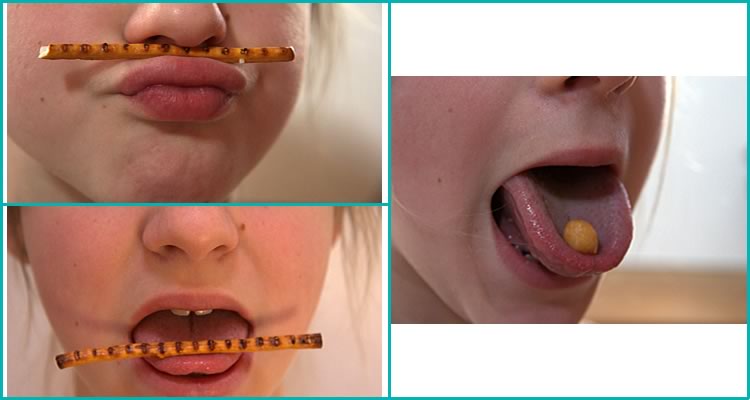
Better to see it once ...
If you still have questions about organizing speech gymnastics, watch the free video tutorials on the "Gift to Children" website.
A professional speech therapist-defectologist will show and explain all the subtleties of working with children of each age group.
You can also get a free specialist consultation there.
Speech is a wonderful gift that nature has bestowed only on humans. But for a child to speak, time and parental support are needed, which will help not only overcome, but also prevent possible problems.
Read feature articles